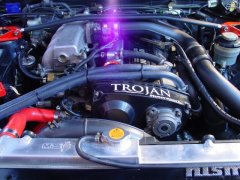Is this what you call lag or something else?
Announcements
-
Similar Content
-
Latest Posts
-
How f**ked am i? what would happen if i leave the magnet inside there?
-
I'll update you guys when i get home from work, im going to try to fish it out. I just realized that i can't even drop the oil pan. The whole front diff and axles are connected to the oil pan... is it even possible to drop the oil pan without taking out the motor?
-
So recently at the track had experienced a loss of throttle after a period of WOT after installing the emtron ecu, recently did some logging to troubleshoot the issue and found the ECU was cutting due to a low oil pressure issue. Going over the log can see that while accelerating at 4k rpm will see 100 PSI of pressure and holding steady at that level until getting off the throttle which then after can see as low as 25 PSI at 3-4k rpm and will recover back to a normal level after that. Wondering if anyone has an idea what could be the cause as it just feels abit strange and i dont feel like it could be a sensor issues just due to it clearly sitting at a good pressure until off throttle, in the attached can see a 3rd and 4th gear pull but can even perform great through 3 and 4 gears of WOT but still once off throttle and getting back on it will see pressure drop.
-
By TurboTapin · Posted
There are a few different ways of doing it. I'm currently running two 1000cc pre-TB nozzles and PWM the pump for control. I'll be moving over to a constant pressure system and direct port. I'll run the pump off a regular relay, have it cycle on roughly 5psi before I start injecting to build pressure and then PWM a WMI solenoid (It's basically an injector that can take a lot of pressure and not corrode with water and meth.) The solenoid feeds the 6 direct port ~200cc nozzles. I'll also keep one ~250cc pre-TB nozzle to help keep IAT's in check. Safety will be a little different as well. I used to use a pressure switch but will be moving over to a pressure sensor between my solenoid and nozzles. I'll trigger my solenoid and if I don't see specific pressure within a specific timeframe (e.g 100psi within a second, 175psi within 2 seconds), I kill it and revert back to non WMI maps the same way I did it before with 4D in Haltech. I was just figuring out the timers in my ecu last night. They made that a little more complicated than I would have liked... I wish Haltech offered a larger set of logic/math functions like other ecu's do. I can't do very much with just AND's and OR's. I've been asked to do fuel/ignition mapping on a medium bore engine at work in May (192L V16). Being the only programmer in my region and having went and opened my mouth about knowing the ins and outs of fuel/ignition mapping, I have now been deemed an expert. Fun fun. The entirety of the logic and algorithms are programmed in C on a PLC. As I spend more time figuring it all out, I like what I see and eventually I may consider doing the same as a pet project to replace my ecu. -
By Dose Pipe Sutututu · Posted
This would be interesting, would you feed it via a 2nd row of injectors? Or just usual WMI nozzles?
-







Recommended Posts
Create an account or sign in to comment
You need to be a member in order to leave a comment
Create an account
Sign up for a new account in our community. It's easy!
Register a new accountSign in
Already have an account? Sign in here.
Sign In Now